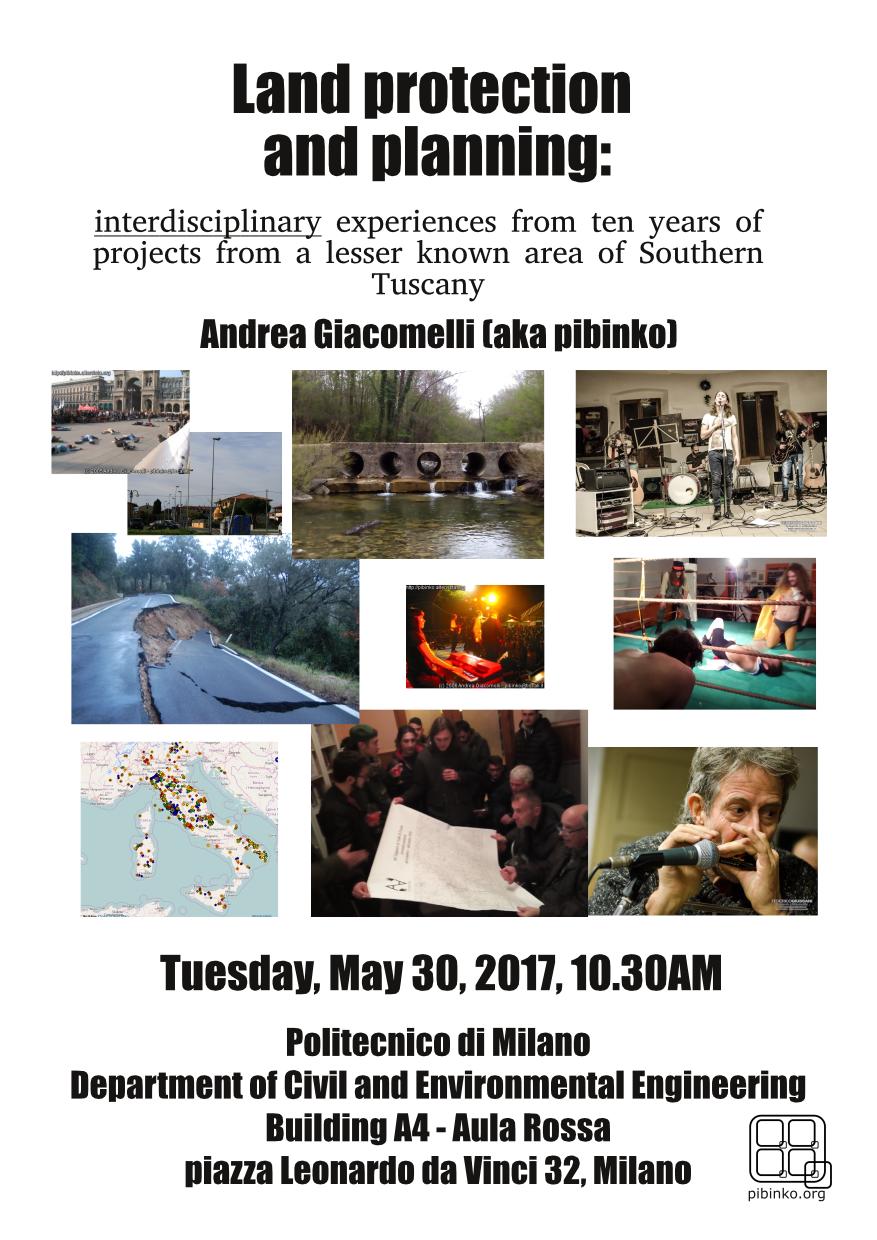Tag Archives: buiometria partecipativa
BMP Interview #5: Rod McDonnell
 Rod E. Mc Connell, Canadian, President of the Alberta Dark Sky Association, tells us about his experience, starting from the Edmonton area, and gradually reaching wider horizons.
Rod E. Mc Connell, Canadian, President of the Alberta Dark Sky Association, tells us about his experience, starting from the Edmonton area, and gradually reaching wider horizons.
Q: How did your involvement with the light pollution issue start?
A: My involvement with light pollution began over fifty years ago when I entered university.
At home in the country my beloved night skies were studded with brilliant stars but, in the city of Edmonton, their numbers were dramatically reduced. In 1963 or ’64, I wrote to city council complaining of the light pollution which blocked my view of the heavens.
However, 1960’s society was not ready for lessons in energy conservation or light waste,
trespass and pollution (Light-WTP). The curt letter I received emphasized the City knew
what it was doing and did not need the recommendations of some kid from the country.
There were even derogatory comments in the local newspaper regarding my concerns.
 In November 2009, at my nature preserve 150 km northeast of Edmonton, I really
In November 2009, at my nature preserve 150 km northeast of Edmonton, I really
became aware of how light pollution from Edmonton and area had increased over the years.
An Edmonton taxpayer, I decided to take on the city. Determined to save my dark skies, reduce this waste and cut light pollution, I gathered information on light waste, its costs and its effects. I also formed a group and invited other interested people from
different backgrounds to join the “Alberta Dark Sky Association,” a loose association of
professionals who had similar objectives.
Realizing that we would never win the battle with the City over “light pollution,” I
strongly recommended that we create a program which would emphasize reduced
light/energy waste while reducing costs, improving city lighting, citizen and
environmental health, all items city council should find attractive. I proposed that we call
the initiative the “Light-Efficient Community” program (copyrighted.) This phrase
describing our goal could then be quickly, easily and positively understood by all and
greeted with approval rather than fear or anger.
Definition:
A Light-Efficient Community (LEC) is one that uses lighting intelligently and
responsibly. It uses the most effective, efficient artificial lighting available to minimize
energy waste, glare, light trespass and light pollution. A Light-Efficient Community
employs sound planning, designs, measures, legislation, fixtures, technologies and
good lighting practices to reduce its energy costs and carbon footprint while preserving
the natural environment and ensuring health, safety, security and a high quality of life
for all.
Prime Principle:
Light only what needs to be lit only when it needs to be lit with the most efficient light
source of appropriate intensity and colour without creating direct light trespass on
neighboring properties and the night sky. Keep your light to yourself!
 This initiative eventually met with council approval and the Edmonton “Light-Efficient Community Policy” was adopted August 21st, 2013. We are in the process of making changes to streetlighting and will shortly begin work on “Phase 2 – Exterior Community Lighting” and a “LEC Educational Program.”
This initiative eventually met with council approval and the Edmonton “Light-Efficient Community Policy” was adopted August 21st, 2013. We are in the process of making changes to streetlighting and will shortly begin work on “Phase 2 – Exterior Community Lighting” and a “LEC Educational Program.”
We have and continue to consult with other communities in creating and adopting the
LEC program throughout Alberta and elsewhere. Our work extends far beyond Edmonton
and encompasses communications and efforts to reduce Light-WTP on an international
basis. To assist in these efforts, I have created a web site
(www.Light-EfficientCommunities.com)
which offers a short course and many resources for the LEC advocate. I am also currently
producing a film (“Demons in the Light”) which will help educate all sectors of the
communities in which advocates work. (Useful modules from the film are now available
on Youtube.com. – Search for “Light-Efficient Communities)
Q: Is the Alberta Dark Sky Association (ADSA) affiliated to the International Dark Sky
Association, or is it an independent operation?
A: The ADSA is a completely separate organization from the International Dark Sky
Association though several of our members also carry IDA memberships.
Q: When was the ADSA created? How many members does it have?
A: The ADSA was created in 2009. Members: Our number of associates approximates 100
with anyone having an interest in Light-WTP welcome.
Geomusic at GIT 2017 (Gavorrano, Southern Tuscany, June 12-13, 2017)
Our geomusical activity continues, after the launch at the Farma Valley Winter Fest (December 17, 18 and 19, 2016), the presentation at the FOSS4G conference in Genua (9-2-2017), the international webinar for Geo4all/ASPRS (7-4-2017) and the lecture at Politecnico di Milano (30-5-2017).
At the 12th conference of the Geomatics and Information Technologies section of the Italian Geology Society (aka: GIT 2017), held in Gavorrano, Southern Tuscany on June 12 and 13 2017 we presented:
- A poster called Participatory methods for territorial protection and promotion centered on a free/open source approach: case studies from Southern Tuscany( (by Andrea Giacomelli, Mario Straccali, Andrea Bartalucci, Claudio Spinosi)
- An oral presentation by Etruschi from Lakota’s, Dario Canal, on the subject of Participatory mapping in a geothermal area: first steps from the Cecina Valley.
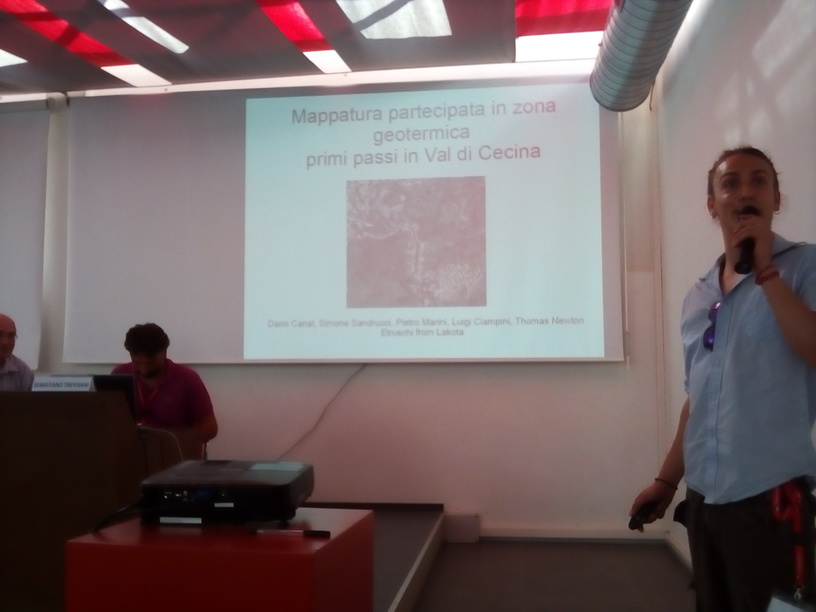
We don’t know of geologists going to contests for professional musicians…in our case we had a young professional musician and singer giving a talk in a geoscience conference (and kudos to Dario for taking up the challenge).
This was not a weird experiment, since we are collaborating with the band on on participatory mapping projects, and they are actually based in an area of great interest for geology (and geothermal activities), but surely it was an unusual and stimulating presentation.
Should you be interested in collaborating with the Val di Cecina participatory mapping campaign, which follows the work started in 2015 in the Farma Valley, please write to info@pibinko.org.
Nine years of BuioMetria Partecipativa: not just Citizen Science
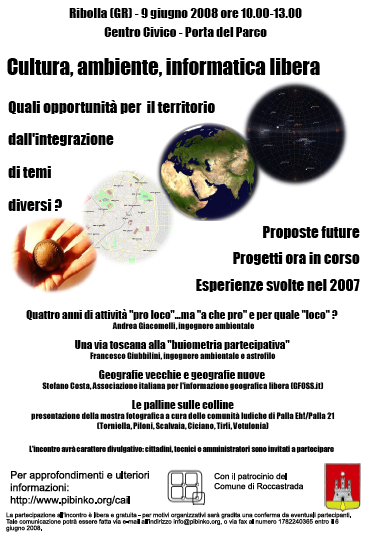 On June 9, 2008, in Ribolla, Southern Tuscany, a conference was organized to discuss how culture, environment, and open innovation may be integrated to generate new opportunities for rural areas. Two of the four talks concerned the developments following the mission to promote the ancient game of palla a 21 in Chicago, Illinois, in July 2007. This operation, in turn, generated invitations to propose the game in two festivals in Italy (Verona and Mantova), plus the idea of setting up a photo exhibition (presented first in Ribolla a couple of months later in San Francisco, California) and a contest to shoot photos of the ball during the 2008 tournaments.
On June 9, 2008, in Ribolla, Southern Tuscany, a conference was organized to discuss how culture, environment, and open innovation may be integrated to generate new opportunities for rural areas. Two of the four talks concerned the developments following the mission to promote the ancient game of palla a 21 in Chicago, Illinois, in July 2007. This operation, in turn, generated invitations to propose the game in two festivals in Italy (Verona and Mantova), plus the idea of setting up a photo exhibition (presented first in Ribolla a couple of months later in San Francisco, California) and a contest to shoot photos of the ball during the 2008 tournaments.
A third talk was about free/open- source mapping, by Stefano Costa, a young archaeologist with a significant experience in this field.
The fourth talk, given by Francesco Giubbilini, was -in fact- the launch of the BuioMetria Partecipativa project. This came after about four months of planning and preliminary tests, together with Andrea Giacomelli. In this phase we also investigated about other similar projects internationally, and we learned that -as of Spring 2008- globally there was only one other initiative following the same approach (i.e. conducting measurements of night sky quality by lending sensors to citizens), in Hong Kong.
The initiative immediately gained national media coverage, with an interview for RAI Radio Due, and started its public operations.
The road since then has been long, and according to some observers excessively winding in complexity and complication. However, we found we have the possibility of intertwining topics, methods and people with different background, so we just do it. Many observers -in time- have revisited their initially puzzled opinions, and are now following with interest our work.
We are now nine years into collecting light pollution data in “citizen science” mode, providing awareness raising on issues related to artificial light at night from the standpoint of environmental engineering and with an interdisciplinary approach, we use advanced technologies for data management (geographic information systems), and we advocate -and adopt- open source and open data models to share knowledge.
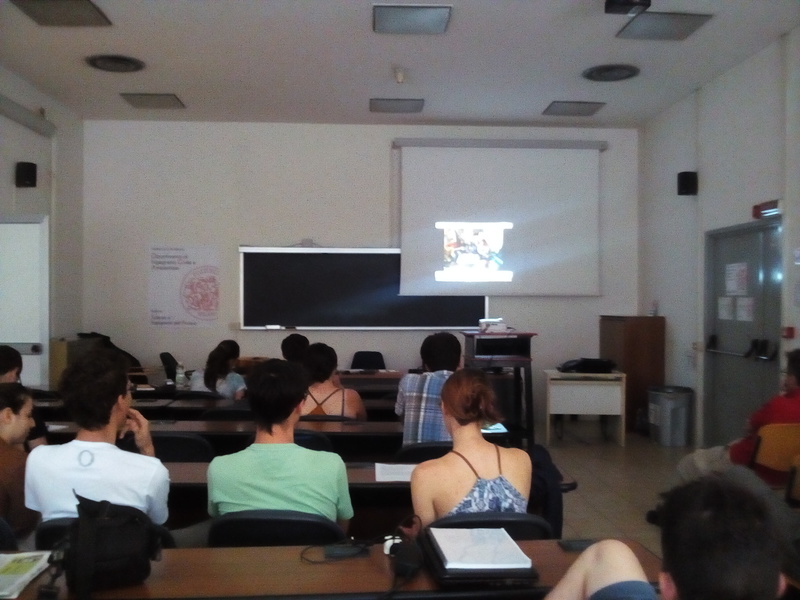 In its basic form, i.e. the citizen science level, the project has been engineered to operate with minimal resources, which we have covered in time via awards, small funding from European projects, and a partial support of the key local communities involved. In parallel we are always seeking new opportunities to develop parts of the project which are currently in a preliminary form, but which would not be difficult to deliver -once we find the right stakeholders and appropriate resources- given the long-term expertise of our team on environmental monitoring.
In its basic form, i.e. the citizen science level, the project has been engineered to operate with minimal resources, which we have covered in time via awards, small funding from European projects, and a partial support of the key local communities involved. In parallel we are always seeking new opportunities to develop parts of the project which are currently in a preliminary form, but which would not be difficult to deliver -once we find the right stakeholders and appropriate resources- given the long-term expertise of our team on environmental monitoring.
Next to the awareness raising thread, we also propose services, consulting and training concerning “the other half of the landscape”, and a vision on artificial lighting which is often a complement to professionals engaged in the lighting business. We also have the differentiator of being based in the Farma Valley, Southern Tuscany. This is a lesser known portion of this region, in one of the areas with the darkest night skies in Italy, which is generally renown to be a country with quite high levels of lighting and light pollution…we decided to build the project in a rural context, far from smart cities and broadband communications, but always maintaining a wider view on things happening.
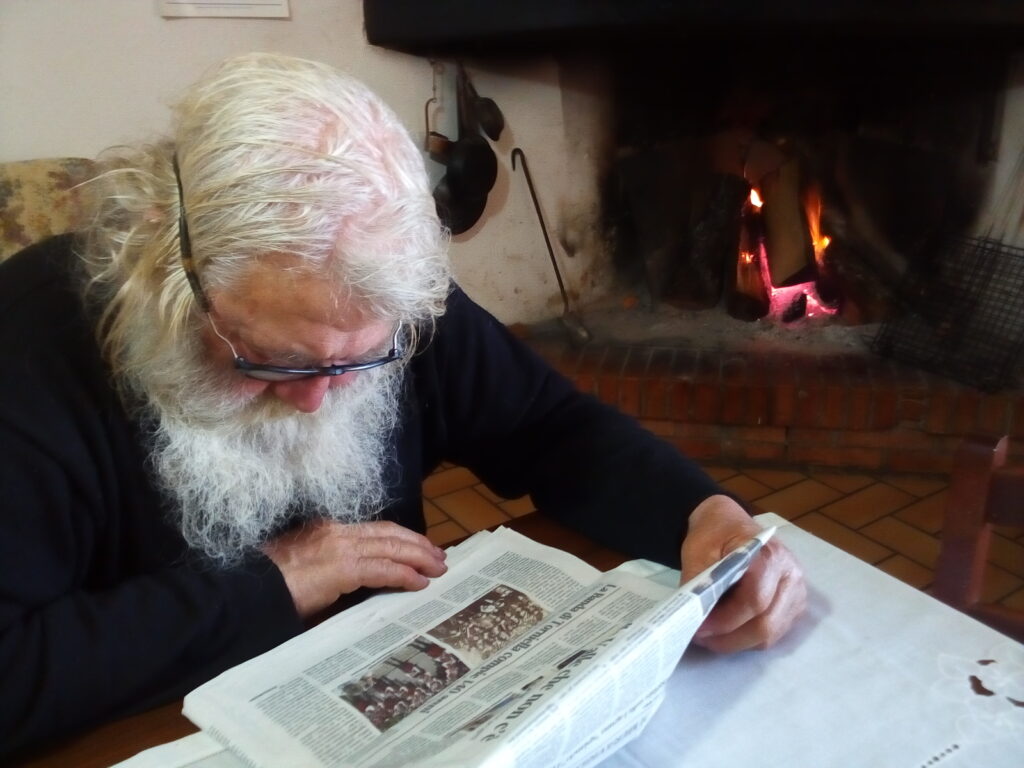 In time, our team has evolved. Of the initial “line-up” only one remains (i.e. Andrea Giacomelli), but other experts have appeared, also increasing the skill set adding expertise in natural sciences, photography, construction and maintenance. In spite of these transitions, the project has maintained its alignment with respect to its original objectives. It has also obtained recognition from different counterparts in Italy and abroad, is receiving increasing attention from various market sectors, as well as from the scientific community.
In time, our team has evolved. Of the initial “line-up” only one remains (i.e. Andrea Giacomelli), but other experts have appeared, also increasing the skill set adding expertise in natural sciences, photography, construction and maintenance. In spite of these transitions, the project has maintained its alignment with respect to its original objectives. It has also obtained recognition from different counterparts in Italy and abroad, is receiving increasing attention from various market sectors, as well as from the scientific community.
While we prepare the tenth anniversary of our Palla a 21 at the Art of Play of Chicago story, we are also tuning our upcoming BuioMetria Partecipativa Summer campaign. This year activities are taking shape in collaboration with the University of Pisa (Departiment of Biology), and with the National Research Council’s Institute of Biometeorology, and it will focus on parts of the Tuscan coast. 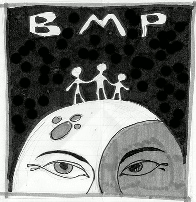 To learn more about this, you can show up on Sunday, June 11, in Montarrenti (Siena), on Thursday, June 15 in Pisa, Saturday, June 24, in Gerfalco (GR), o write to info@pibinko.org.
To learn more about this, you can show up on Sunday, June 11, in Montarrenti (Siena), on Thursday, June 15 in Pisa, Saturday, June 24, in Gerfalco (GR), o write to info@pibinko.org.
Jun. 15, 2017, Meet the BuioMetria Partecipativa project in Pisa, for a more aware use of artificial light at night
We continue our thread of 2017 events on participatory night sky monitoring activities and outreach on a more aware use of artificial light at night (and at day…). For more information, check out the BuioMetria Partecipativa web site or write to buiometria@attivarti.org.
We will be at the Torre del Luppolo from 6PM to 8PM. Italian, English, French, and Portugues spoken.

Save the date: Sat. June 24, Buiometria Partecipativa in Gerfalco, Southern Tuscany

Sturday, June 24, at 10PM at the Casa Rurale ex Croce Rossa in Gerfalco, we will have a BuioMetria Partecipativa evening.
Andrea Giacomelli, MS and Phd in environmental engineering, creator of the project in 2008, will help the participants in conducting measurements of night sky quality, while learning about various issue related to artificial light at night and gaining insights on nightscapes.
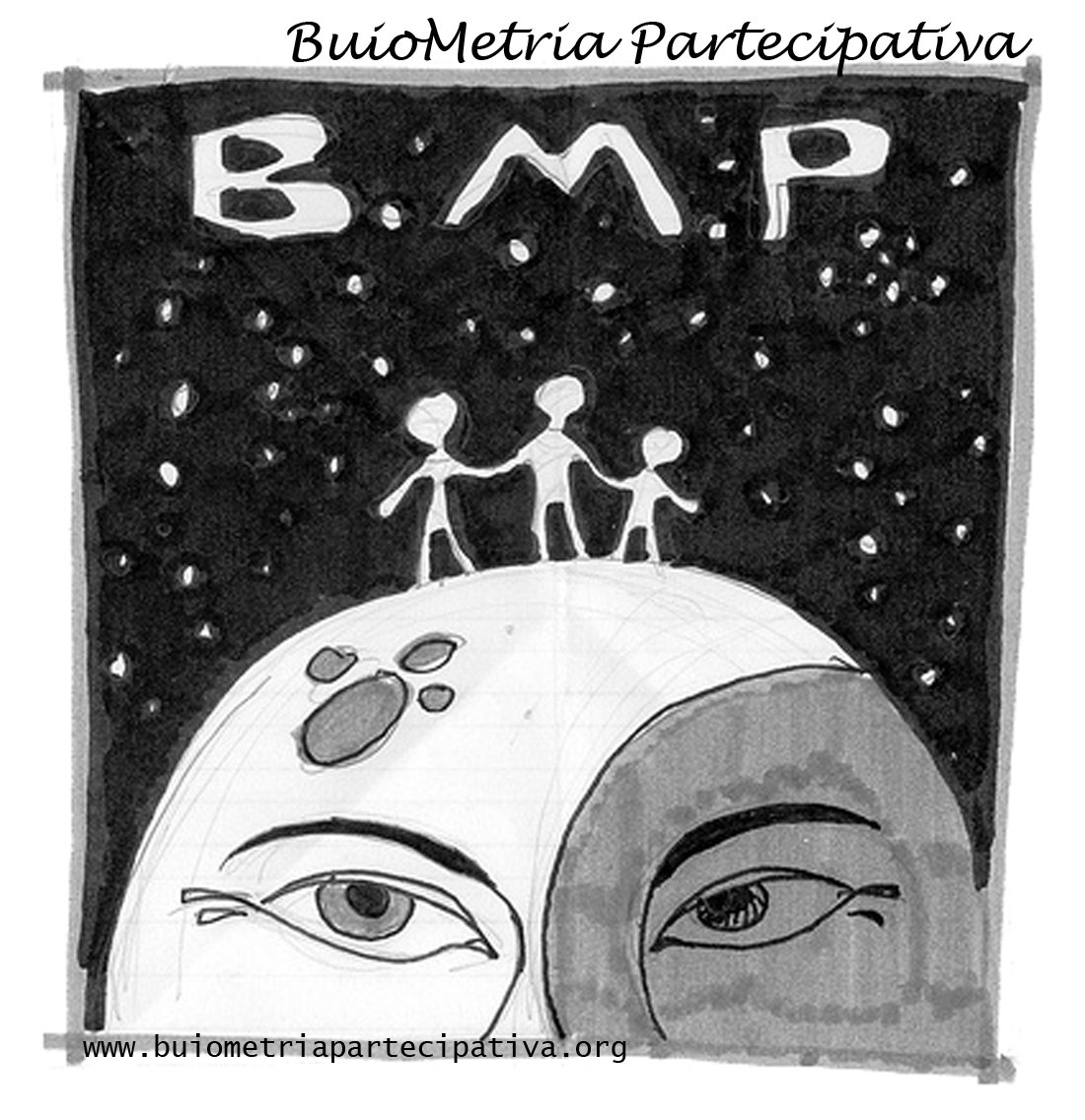 The inner parts of Southern Tuscany are in fact one of the areas with the lowest level of light pollution in Italy. This allows residents and tourists to benefit of night skies which are comparable to those of much more exotic locations, while enjoying in parallel the unique historical, cultural (and food) heritage of the Tuscan territory.
The inner parts of Southern Tuscany are in fact one of the areas with the lowest level of light pollution in Italy. This allows residents and tourists to benefit of night skies which are comparable to those of much more exotic locations, while enjoying in parallel the unique historical, cultural (and food) heritage of the Tuscan territory.
The event takes place in the context of a collaboration which started with the Municipality of Montieri last Fall, given the interest of this administration to promote its territory starting from its lesser known peculiarities. These found a good match in the outreach and citizen science activities which were started nine years ago by the BuioMetria Partecipativa project, which also created important links both nationally (National Research Council and Universities) and internationally (with the active presence in networks for the promotion of night skies).
After a brief presentation, there will be a walk in the village and its immediate surroundings, in order to verify with the BuioMetria instruments both the level of light pollution in the areas, as well as the lighting levels and types of illumination used in various sites.
Should weather conditions not allow the outdoor measurements (overcast or rain), a presentation will be given providing in any case information on how to conduct the measurements, showing various clips concerning light pollution, and planning with potential volunteers future data collection activities.
Admission to the event is free
For more information: Andrea Giacomelli, info@pibinko.org
Save the date: Sunday, June 11 in Montarrenti (Siena) a BuioMetria talk in the 40th anniversary of the Siena Amateur Astronomer Association
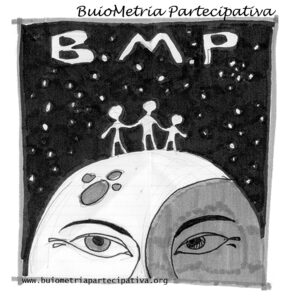 With the BuioMetria Partecipativa project I have been invited to give a talk during the fourtieth anniversary celebrations of the Unione Astrofili Senesi . This will be at the Montarrenti observatory, a few kilometers South of Siena.
With the BuioMetria Partecipativa project I have been invited to give a talk during the fourtieth anniversary celebrations of the Unione Astrofili Senesi . This will be at the Montarrenti observatory, a few kilometers South of Siena.
You are all invited, both to get to know better our project, as well as to learn about the activities of the Siena amateur astronomer association.
The programme starts at 9.30AM and ends at 1.30PM. The BuioMetria Partecipativa talk is scheduled at 11.15AM.
May 2017: MoU between Attivarti.org and CNR IBIMET signed

A memorandum of understanding was signed by the Italian National Research Council’s Institute of Biometeorology and Attivarti.org.
This act creates a liaison between a research organization and a small NGO active in outreach activities providing a formal setting for the joint initiatives that these two subjects have been conducting for over three years, starting from the work undertaken within the “Loss of the Night Network” on artificial light at night.
Among the outcomes of this collaboration to date, we can mention the experimental campaign undertaken in March 2015 between the Farma Valley and the CNR Campus in Florence(cfr. blog di Attivarti.org) and the aticle for the International Journal of Sustainable Lighting published in February 2017.
The Loss of the Night Network project ended in October 2016, but Attivarti.org and CNR IBIMET saw the interest in continuing some form of coordinated activitiy, focusing on two topics. The firs is research, outreach, and technology transfer on artificial light at night and light pollution. The second is about experimental campaigns, especially conducted in citizen science mode.
Both these lines of activity fall in a path which was started nine years ago by the BuioMetria Partecipativa project, which is gradually consolidating and receiving increasing attention not only in the research field, but also by other public and private organizations. The points of contact for the activities are Luciano Massetti for CNR IBIMET and Andrea Giacomelli for Attivarti.org.
The CNR Institute of Biometeorologystituto di Biometeorologia was founded in 1970, and has grown in the years researching numerous topics on agrigulture and environment. Its headquarters are in Florence, and it has other offices in, Bologna, Sassari and Roma.
Attivarti.org was founded in 2011 by a small team of interdisciplinary experts who were collaborating since 2006, to deal with NGO aspects of promotion and protection of lesser known assets in the areas of culture, environment, and open innovation with a strong participatory component. The base of the association is in Torniella, a hamlet in the Farma Valley, Southern Tuscany, but the team operates internationally.
For more information: info@attivarti.org o l.massetti@ibimet.cnr.it
A moment of “civic” engineering at the Politecnico di Milano
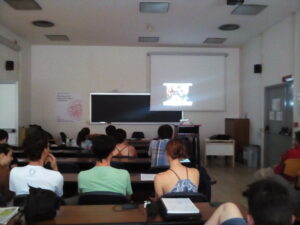 With the Etruschi from Lakota missing from the scene, on this round, during the lecture on Land protection and planning: interdisciplinary experiences from ten years of projects from a lesser known area of Southern Tuscany, I showed the unplugged version of Il contadino magro (i.e. The Skinny Farmer) taken from the Apr. 7 webinar for the GeoforAll network and the American Society for Photogrammetry and Remote Sensing (ASPRS).
With the Etruschi from Lakota missing from the scene, on this round, during the lecture on Land protection and planning: interdisciplinary experiences from ten years of projects from a lesser known area of Southern Tuscany, I showed the unplugged version of Il contadino magro (i.e. The Skinny Farmer) taken from the Apr. 7 webinar for the GeoforAll network and the American Society for Photogrammetry and Remote Sensing (ASPRS).
The lecture was in fact the continuation of the webinar, removing information not relevant for an Italian audience (like the slides on where is Italy), and adding some analyses conducted over the past couple of months, such as the analysis of demographics for some of the hamlets in our area with data since the 17th century, and slides on various initiatives which were not mentioned in April (work on alien species reduction, managemen of hydrogeologic hazard, etc.)
Thanks again to the Department of Civil and Environmental Engineering at the Politecnico, and namely to Alessandro Ceppi and Marco Mancini, for the hospitality.
Politecnico di Milano, May 30, 2017: Interdisciplinary Land Protection and Planning (the flyer)
Having seen the very cool flyer prepared by CSBNO for the May 30 evening event, I felt the need to make it even with a flyer for the morning seminar at the Politecnico di Milano.
A presentation of both events is available: Politecnico (10.30AM) and Lucernate Civic Centre (9PM)
